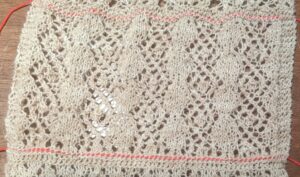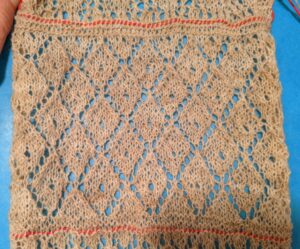Things I learned this week to keep up with change: How to use trackpad gestures to scroll (because scrolling with the arrow keys is disabled in our CMS). How to enable NFC on my phone (because we can now use our phones as access cards). How to use the new elliptical machines at the gym (because now you need to start using it to get it to turn on). The need to use my trackpad to scroll – or worse my mouse when working at my desk – is the small bit of friction I am hating the most. We all hate interface changes, but I really hate every time an interface leaves behind those of us who still try to do as much of our work as possible without needing to remove our hands from the keyboard.
Things I finished making this week: Syllabi and initial assignments for my programming and security classes. A fringy/furry pink scarf I’ve been plodding away at for years. A zig-zag striped “temperature blanket” inspired scarf I knocked out in a week. A yummy Baklava Babka following this recipe (and yes, it really will seem like too much syrup to pour over the cake and you really should add it all). After a chaotic fall I’ve slowed down for more crafting and baking this past month and now I might even get back to the quilt I started and abandoned from the summer.
Things I put off: Making flight arrangements for a conference in March. Putting away the light up yard deer from Christmas. Depositing a paper check I received. Starting in on a >400 page report I need to work my way through. Cleaning out my closet. The lesson here, as always, is probably that I need to be more realistic in my weekly to-do lists.
Things I enjoyed: A solid start to my 38th semester of teaching and round 32 of programming, my most frequently taught course. Starting to play Gris and finding it every bit as beautiful as the reviews suggested. Having friends over for a wonderful potluck and having a house filled with people I care about (and so much cake!) Deciding that I’m happy to have mostly given up on social media and that I should use that time to reconsider what I want to do with this space that I get to control.








